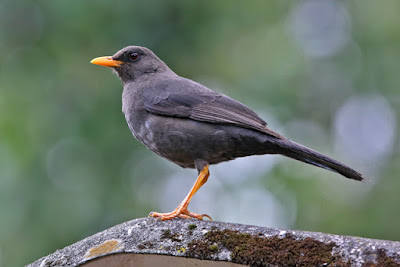 |
| Chatham Mockingbird, San Cristobal August 2015 |
 |
| Western Sandpiper, San Cristobal August 2015 |
 |
| Semipalmated Plover, San Cristobal August 2015 |
 |
| Lava Gull, San Cristobal August 2015 |
One of the main reasons for the visit here was to see the San Cristobal Lava Lizard, which we did, alongside large numbers of Marine Iguanas. However, by late morning it was time to head off along the west side and to the town of Puerto Baquerizo Moreno. The journey provided immense views of Galapagos Shearwaters but little else; however, while docked in the harbour, the boat was buzzed by storm-petrels - at least 25 Elliot's but also my first two Wedge-rumped Storm-petrels. Great views too!
 |
| Elliot's Storm-petrel, San Cristobal August 2015 |
 |
| Yellow Warbler, San Cristobal August 2015 |











































